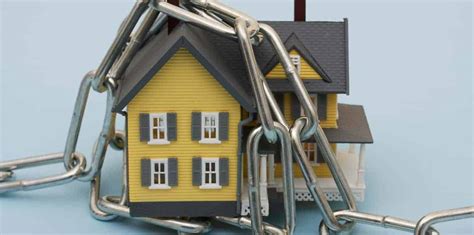Lien-Free Living: How to Remove a Property Lien
A property lien can feel like a dark cloud hanging over your head, casting a shadow on your financial stability and future plans. Understanding what a lien is, how it impacts your property, and most importantly, how to remove it, is crucial for regaining control of your financial life. This comprehensive guide will equip you with the knowledge to navigate this challenging situation and achieve lien-free living.
What is a Property Lien?
A lien is a legal claim against your property, essentially giving a creditor the right to seize and sell your property to satisfy a debt. These debts can stem from various sources, including unpaid taxes, unpaid contractors' bills, judgments from lawsuits, or even unpaid homeowner's association (HOA) fees. The lien remains attached to your property's title until the debt is settled, potentially hindering your ability to sell, refinance, or even obtain a home equity loan.
Types of Property Liens
Understanding the type of lien you're facing is the first step towards removing it. Common types include:
- Tax Liens: These arise from unpaid property taxes. They are typically placed by local or state government agencies.
- Mechanic's Liens: These are filed by contractors, subcontractors, or suppliers who haven't been paid for work or materials provided to improve your property.
- Judgment Liens: These are placed after a court awards a monetary judgment against you.
- HOA Liens: These are filed by your homeowner's association for unpaid dues or assessments.
How to Remove a Property Lien: A Step-by-Step Guide
The process for removing a lien depends on the type of lien and the specific circumstances. However, here's a general approach:
1. Identify and Understand the Lien: Obtain a copy of the lien document from the relevant agency or creditor. Carefully review the document to understand the amount owed, the reason for the lien, and the deadline for resolution.
2. Contact the Creditor: Reach out to the creditor to discuss payment options. Negotiating a payment plan or settlement can be significantly more cost-effective than letting the lien proceed to foreclosure.
3. Negotiate a Settlement: Attempt to negotiate a lower payment amount or a payment plan that fits your budget. Be prepared to document all communication and agreements in writing.
4. Pay the Debt in Full: Once you've reached an agreement, pay the debt in full according to the terms. Obtain written confirmation of the payment and a release of the lien. This release is crucial; it's the official document that proves the lien has been removed.
5. File the Lien Release: Once you have the lien release, file it with the appropriate government agency – usually the county recorder's office – to formally remove the lien from your property title.
6. Verify Removal: After filing the lien release, check the property records to verify that the lien has been successfully removed.
What Happens if You Don't Remove the Lien?
Ignoring a lien can have serious consequences. The creditor may pursue foreclosure proceedings, resulting in the sale of your property to satisfy the debt. This can lead to significant financial loss and damage to your credit score.
How Can I Prevent Property Liens in the Future?
Proactive steps can significantly reduce the risk of future liens:
- Pay Bills on Time: Consistent and timely payment of all bills, including taxes, HOA fees, and contractor invoices, is essential.
- Maintain Accurate Financial Records: Keep detailed records of all payments and agreements.
- Understand Your Contracts: Carefully review all contracts before signing, paying particular attention to payment terms and deadlines.
What are the Common Mistakes People Make When Dealing with Liens?
- Ignoring the Problem: Ignoring a lien won't make it disappear. Early intervention is crucial.
- Failing to Negotiate: Many creditors are willing to negotiate payment plans. Don't hesitate to ask.
- Not Obtaining Written Confirmation: Always get written confirmation of any agreements or payments.
This comprehensive guide provides a framework for dealing with property liens. Remember, early action and clear communication are key to resolving the issue efficiently and regaining control of your property. Consult with a legal professional if you require further assistance or have complex situations. Achieving lien-free living is possible with the right knowledge and approach.

